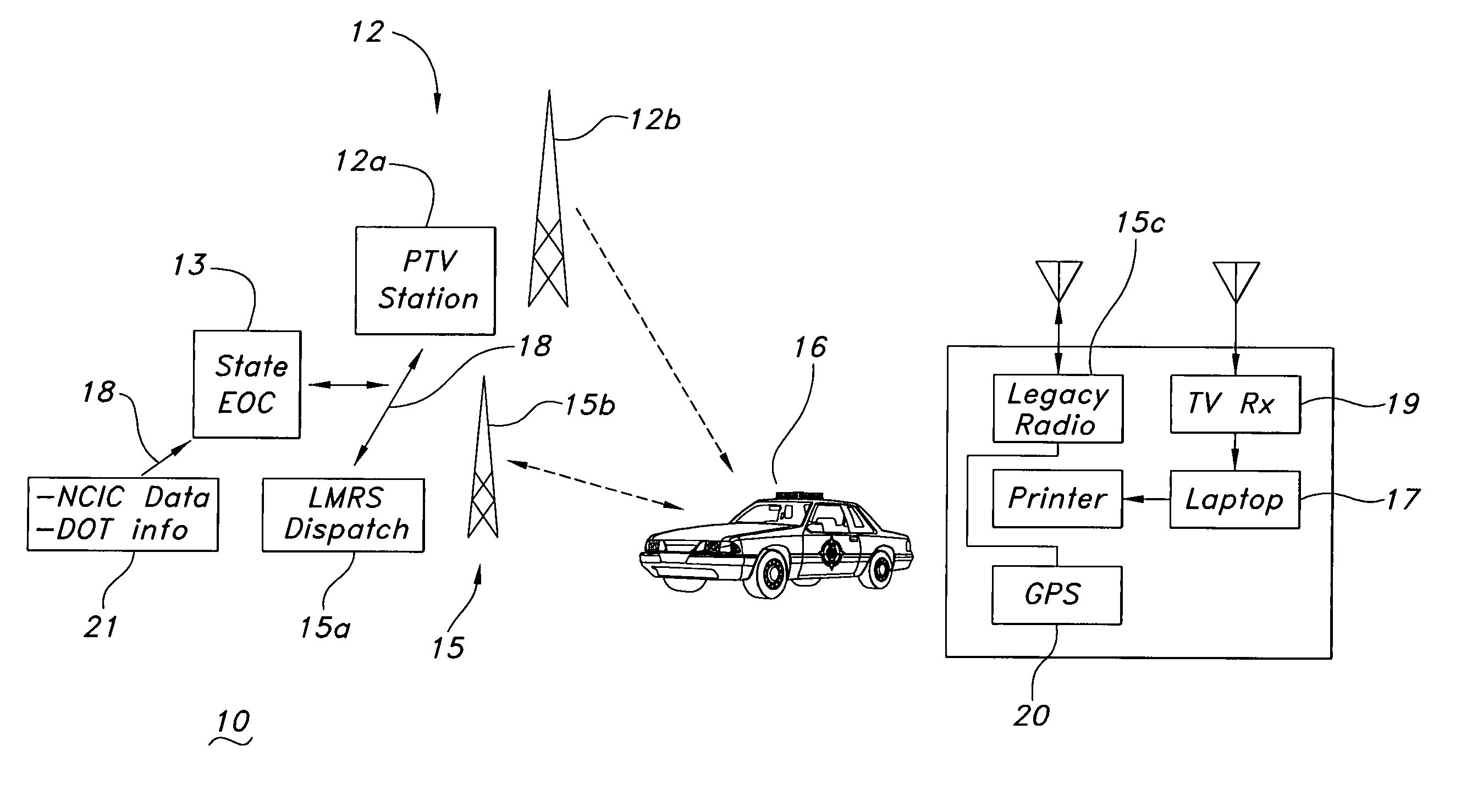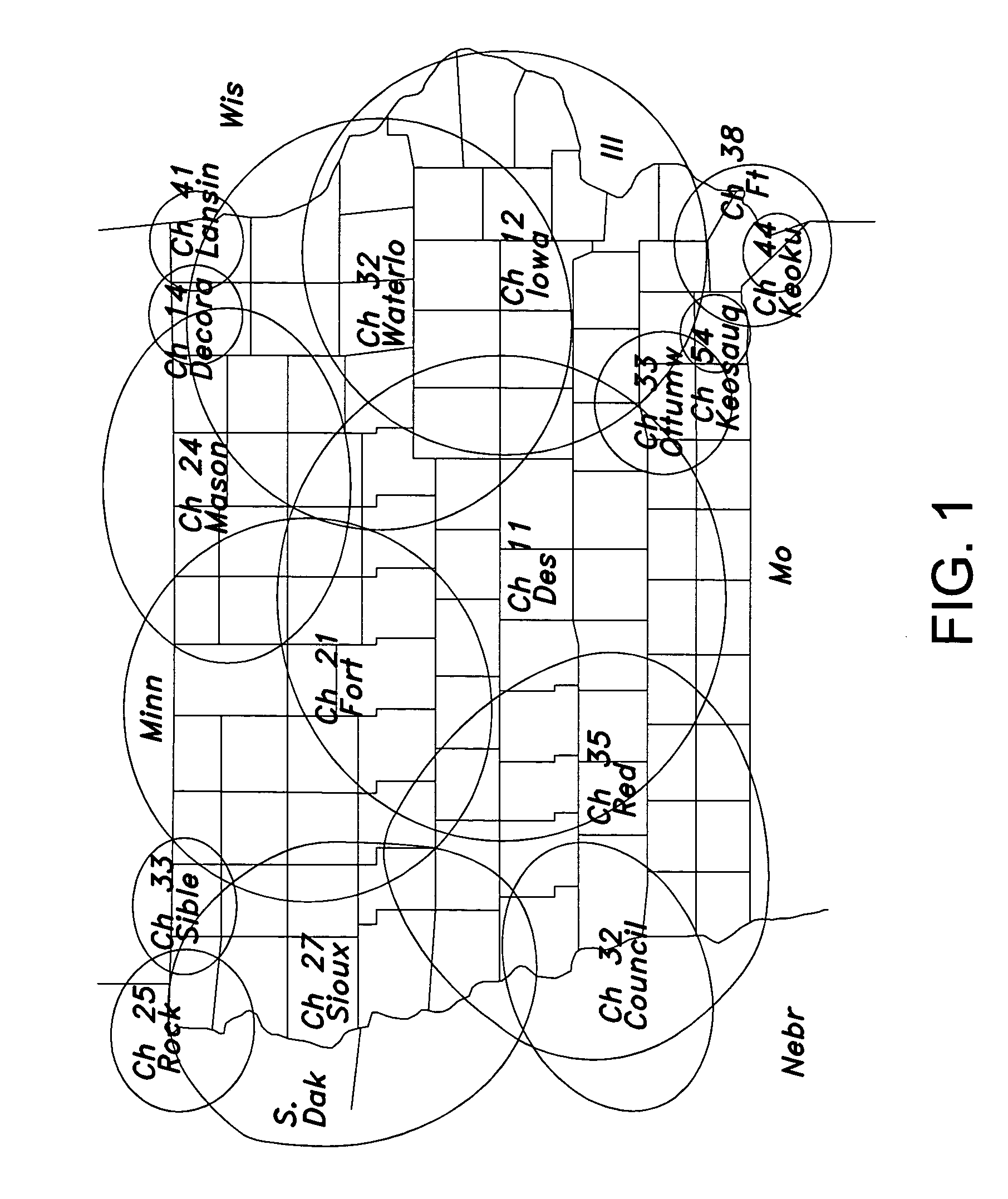Public safety communications network using asymmetric receive/transmit channels
a communication network and receive/transmit channel technology, applied in the field of communication networks, can solve the problems of inability to offer any type of broadband reception, congested channels, video, graphics, or picture data, etc., and achieve the effects of high data rate, high reliability and redundancy of statewide public service communications, and better timeliness and quality of information services
- Summary
- Abstract
- Description
- Claims
- Application Information
AI Technical Summary
Benefits of technology
Problems solved by technology
Method used
Image
Examples
Embodiment Construction
[0030]The invention described herein is for a public safety and homeland security communications network using asymmetric receive and transmit channels. The system is an asymmetrical hybrid communications system using digital television (DTV) assets such as the Public Television (PTV) network for delivering wide bandwidth data and land mobile radio systems (LMRS) for making narrow bandwidth requests to receive the wide bandwidth data at a mobile client. The asymmetric communications system has the ability to efficiently provide data broadcasts, alerts, graphics, and video transmission and retrieval to the mobile client. The mobile client may be any vehicular system or any system for a person on foot. The system provides efficient communications channel use by using a unique forward error correction (FEC) regulation system that includes vehicular motion and absolute position parameters as given by GPS or any other geolocation system including augmented and hybrid positioning schemes....
PUM
 Login to View More
Login to View More Abstract
Description
Claims
Application Information
 Login to View More
Login to View More - R&D
- Intellectual Property
- Life Sciences
- Materials
- Tech Scout
- Unparalleled Data Quality
- Higher Quality Content
- 60% Fewer Hallucinations
Browse by: Latest US Patents, China's latest patents, Technical Efficacy Thesaurus, Application Domain, Technology Topic, Popular Technical Reports.
© 2025 PatSnap. All rights reserved.Legal|Privacy policy|Modern Slavery Act Transparency Statement|Sitemap|About US| Contact US: help@patsnap.com



